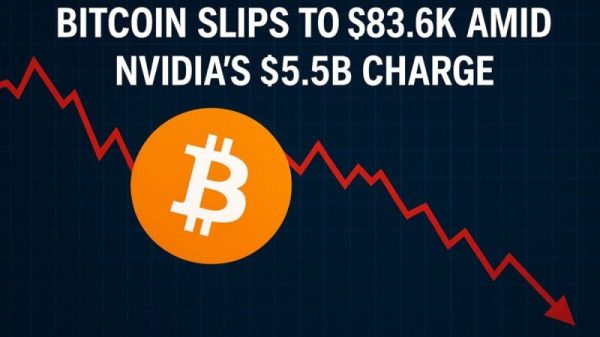With a potential strike at ports up and down the East Coast and along the Gulf Coast set to begin after midnight Monday, logistics executives tell CNBC the remaining hours are critical in moving out as much trade as possible before a shutdown that will do serious damage to the functioning of the U.S. economy.
Based on data from ImportGenius, which tracks the Bills of Lading — the digital receipts of cargo containers — a total of 54,456 twenty-foot equivalent units (TEUs) arrived on Friday at the 14 ports operating under the Master Contract between the International Longshoremen’s Association and the US Maritime Alliance (USMX) which expires at midnight Monday. The approximate value of that freight was upwards of $2.7 billion, based on an MDS Transmodal estimate of $50,000 per container. For the weekdays between September 23-27, a total of 273,417 TEUs were imputed through customs at these ports with a value of approximately $13.67 billion.
Alan Baer, CEO of OL USA, said the enormity of the freight volumes arriving Friday alone shows the scramble logistics companies are in to get the containers off the dock by close of business Monday. “Importers, in coordination with their logistic partners, should try to clear as many of their containers off open terminals where possible to avoid possible delays in acquiring their inventory,” said Baer.
On average, it takes one week to clear out one day of a port closure. As much as 43% to 49% of total containerized goods entering the U.S are processed through ports on the East Coast and Gulf Coast.
Michael Kanko, CEO of ImportGenius, tells CNBC the economic importance of the ports impacted by an ILA strike is profound. “As our data shows, a strike of even a week will block the flow of hundreds of thousands of containers into the U.S.,” he said. “These ports are also a major gateway into the U.S. for refrigerated produce. Time isn’t on the side of importers.”
“Every importer, exporter, and even domestic shippers should be watching developments very closely this week because the impacts of a port strike on the U.S. East Coast and Gulf Coast ports could potentially impact all modes if there is a strike, and if it lasts longer than a few days,” said Brian Bourke, global chief commercial officer of Seko Logistics.
The ILA is North America’s largest longshoremen’s union. In a social media post on Sunday, the ILA said its 85,000 members, “joined in solidarity by tens of thousands of dockworkers and maritime workers around the world,” will hit the picket lines at 12:01 am on Tuesday, October 1, and strike at all Atlantic and Gulf Coast ports from Maine to Texas.
Approximately 50,000 ILA union members work at the ports of Boston, New York/New Jersey, Philadelphia, Wilmington, Baltimore, Norfolk, Charleston, Savannah, Jacksonville, Tampa, Miami, New Orleans, Mobile, and Houston.
No negotiations were underway and none were planned before the Monday deadline, according to a Reuters report.
In recent days, top Biden administration officials including Transportation Secretary Pete Buttigieg, Acting Labor Secretary Julie Su, and Director of the National Economic Council Lael Brainard spoke separately with USMX and ILA representatives urging the parties to come to a fair agreement quickly. The Biden administration has stated on several recent occasions that it will not use federal powers to force dock workers to remain on the job. “We’ve never invoked Taft-Hartley to break a strike and are not considering doing so now,” White House officials have said.
The union suspended talks with the USMX in June over issues including use of automation at ports and wages, and the ports ownership group has said in recent weeks that the ILA continues to “strongly signal” that it has already made the decision to strike.
A ports strike could threaten the recent gains made in bringing down inflation and the prices paid by consumers across a wide range of goods, and could give former President Donald Trump another talking point over the key voter issue of the economy in the final month of campaigning.
Based on prior port strikes, ocean carriers normally profit from soaring freight rates based on demand for other ports as well as detention and demurrage fees on containers stranded during a ports shutdown. Analysts have been warning ocean spot rates could increase by 20%-50%. UBS forecast that 20% of Maersk’s total volume would touch a U.S. port that would be impacted by the strike. Maersk is on the board of USMX. UBS estimated that if freight rates increased 30% over two quarters, a revenue tailwind of over $1 billion would be generated.
Meanwhile, union support is a critical issue for the Democrats, and President Biden recently emphasized to reporters he “did not like” Taft-Hartley.
Business trade groups have urged the Biden administration to step in. The U.S. Chamber of Commerce released a poll on Monday morning showing that a majority of both registered voters (58%) and the general population (54%) support the Biden administration intervening and ordering the union to work and negotiate through the use of Taft-Hartley. Roughly 20% of respondents said they were opposed to federal intervention.
In a recent video featuring ILA president Harold Daggett played for rank-and-file union members, who voted unanimously to authorize a strike, he threatened an intentional worker slowdown in moving containers if the Biden administration forces the union workers back to the docks using the Taft-Hartley Act. “You’re better off sitting down and let’s get a contract and let’s move on with this,” he said.
U.S. Customs data showed a wide variety of products still arriving at the Port of New York/New Jersey, the largest port on the East Coast, on Friday — containers holding cosmetics and perfume from Estee Lauder and L’oreal, auto parts and tires, and electrical materials and circuit breakers from automation and electrical leader ABB.
Hundreds of containers came in over the past week for retailers from Walmart to Walgreens, filled with winter clothes, food, electronics, towels, and holiday items, from Disney Halloween pieces to Christmas string lights.
Walmart is the largest importer across all of the threatened ports, according to ImportGenius data.
A spokesman for the Port Authority of NY/NJ said it is closely monitoring developments. The port began preparations for a strike two weeks ago.
“We are coordinating with partners across the supply chain to prepare for any potential impacts,” the spokesman said. “For the over 600,000 regional jobs our port supports and the $240 billion in goods moved through here each year, we urge both sides to find common ground and keep the cargo flowing for the good of the national economy.”
Depending on the length of a strike, the toll on the U.S. economy could reach well into the tens of billions of dollars. For the Port of New York/New Jersey, economic impact could run as high as $641 million per day; while in Virginia, an economic impact of $600 million per day is possible, according to an analysis from Mitre.
East Coast ports in the U.S. are forecast to handle 2.3 million TEU (twenty-foot equivalent units) in October. That translates to 74,000 shipping containers per day, and a value of daily freight upwards of $3.7 billion.
Steve Lamar, American Apparel & Footwear Association president, recently told CNBC that a disruption to the East and Gulf Coast ports would have major impacts on the cost and availability of apparel, footwear, and travel goods, as more than half of all apparel, footwear and accessories move through these ports.
German footwear giant Birkenstock had over 32,000 packages and cargo imported and processed at the Port of Virginia in Norfolk between September 23-Sept. 27.
Amazon.com Services, a subsidiary of Amazon.com that provides e-commerce services for third-party sellers, had over 26,000 mini smart cameras and other products arrive and clear customs between September 23 and Sept. 25.
Ace Hardware had over 64,000 items in 57 containers processed through Customs between September 23-and Sept. 26.
Anheuser-Busch InBev was also among major importers with product cleared through Customs in recent days.
Paul Brashier, vice president of global supply chain for ITS Logistics, said conversations with clients on freight pickup strategy have been taking place over the past two weeks.
“If shippers waited until Monday to bring on additional trucks to pick up their freight, I feel it may be too late to get available containers out of the terminals so they can avoid excessive demurrage charges during the strike,” Brashier said. “Shippers should not be lulled into a false sense of security during the strike, as just like during Covid, the breakdown in the supply chain did not occur until after operations resumed after shut down,” he said.
In a recent advisory to clients, the Georgia Ports Authority recommended import delivery “well before October 1 to minimize any disruptions.”
In addition to apparel, the Port of Savannah saw on Friday thousands of LED panels, Keurig Coffee brewers, and wine for Constellation Brands. In the Port of Houston, Tempur-Pedic mattresses and products for Home Depot and Ikea were identified as arriving Friday.





























